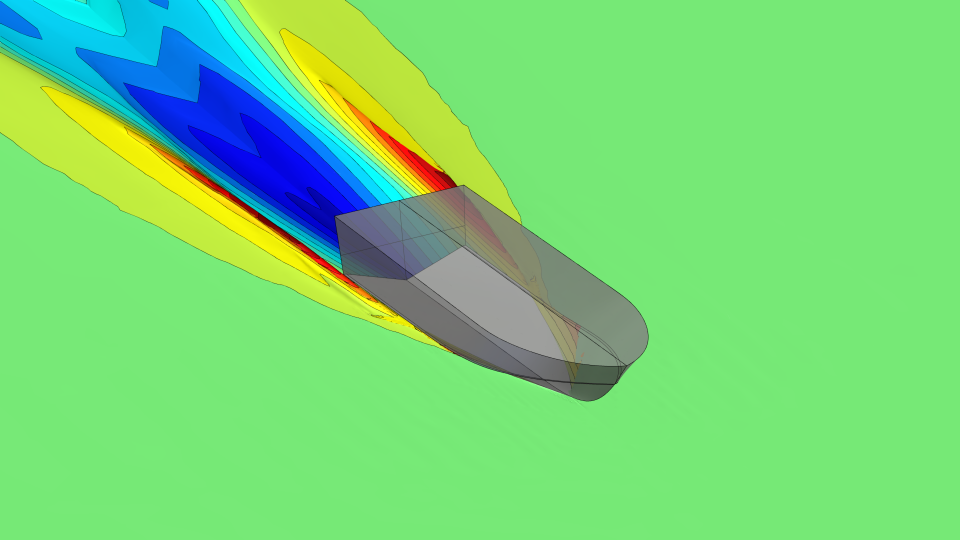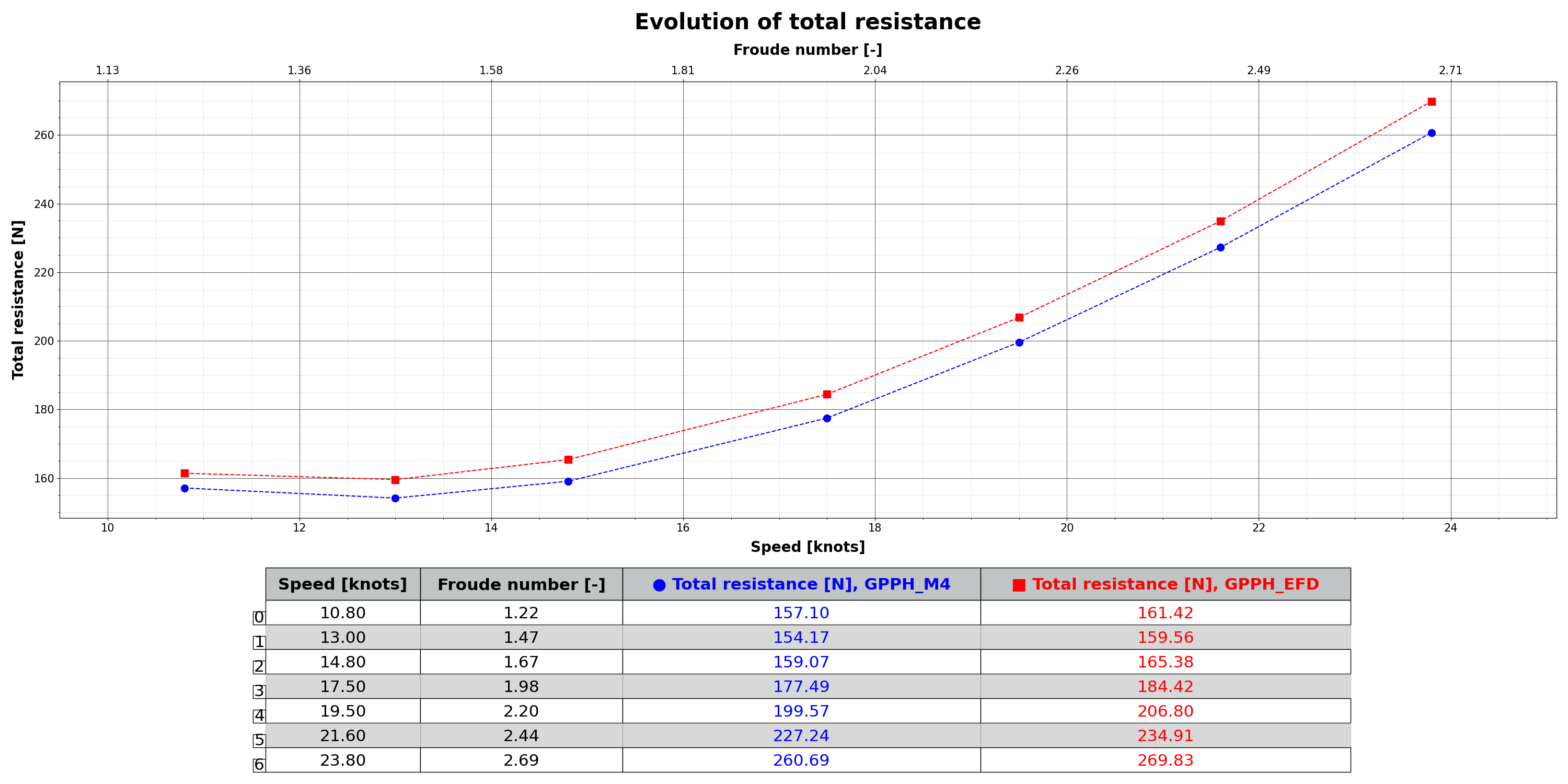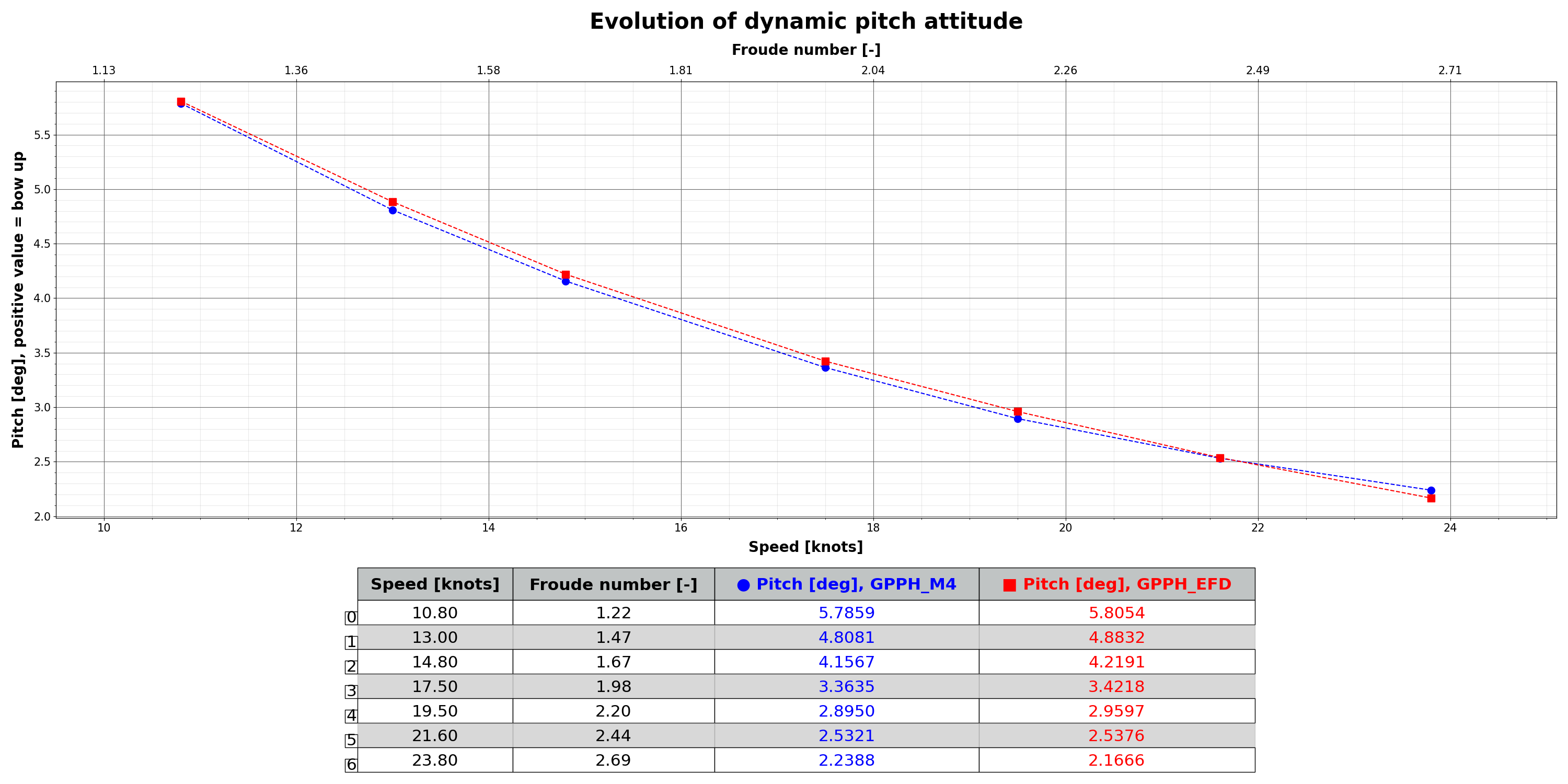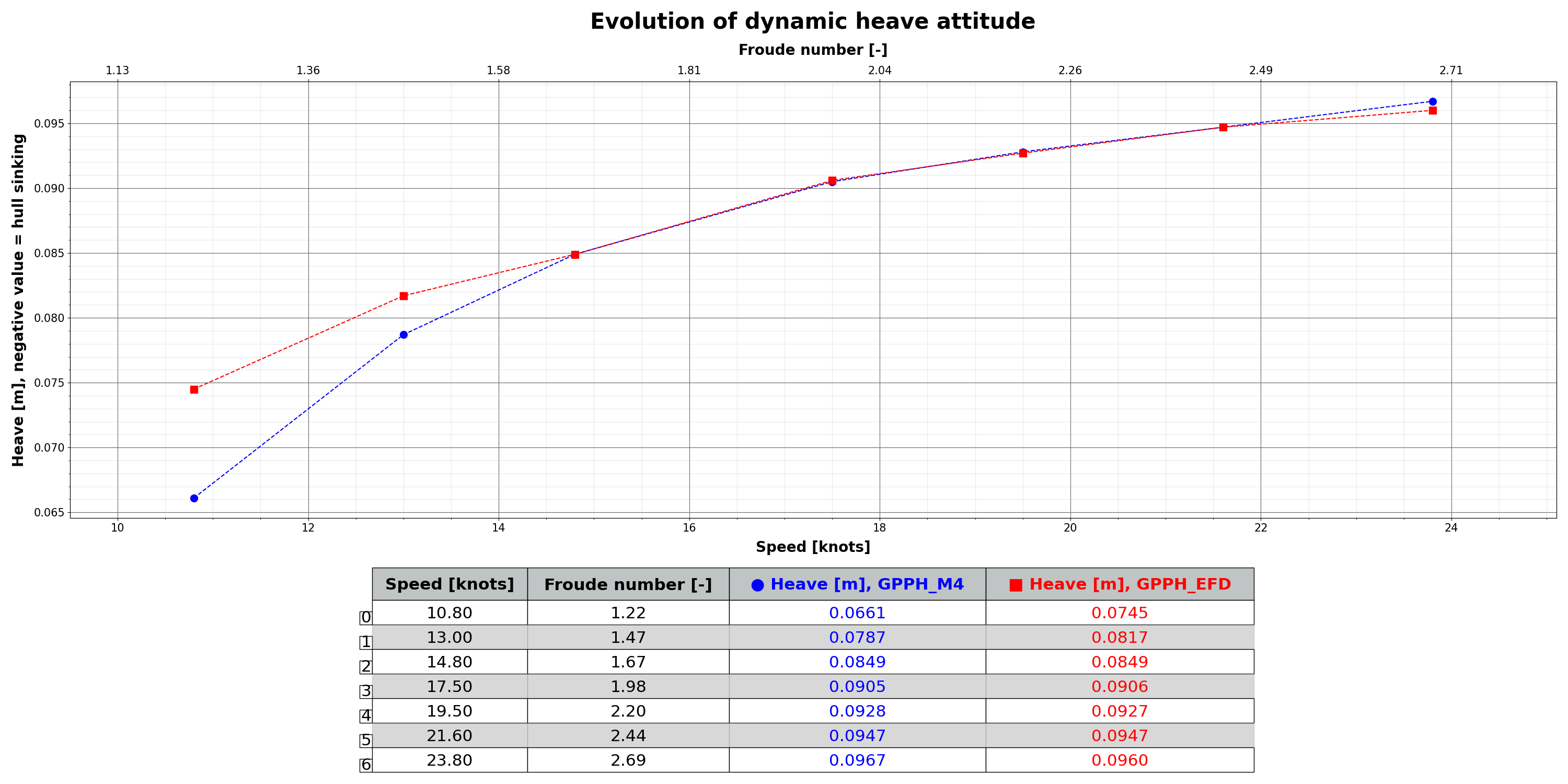
This benchmark provides a comprehensive validation study on the Generic Prismatic Planing Hull (GPPH) in calm water, using NepTech’s digital towing tank. The study focuses on a high-speed regime, covering a Froude number range from 1.2 to 2.7. Key findings compare CFD results with experimental data, addressing resistance, vessel motions, free surface renderings, and computational time.
The findings demonstrate a strong correlation between the numerical and experimental results, with:
- A resistance error ranging from -9.14 to -4.32 Newtons, corresponding to -3.39% to +2.68% compared to the experimental measurements.
- A dynamic heave error from –0.008 m to +0.001 m, corresponding to a deviation of -11.28% to +0.73% compared to the experimental measurements.
- A dynamic pitch error from -0.075° to +0.072°, corresponding to a deviation of -2.19% to +3.33% compared to the experimental measurements.
The EFD/CFD differences are certainly due to be attributed to variations in hydrostatic characteristics between the model used for the tank tests and the model applied in CFD calculations.
This benchmark thus confirms NepTech’s capability to accurately and efficiently predict the dynamic behaviour of a planing hull. By employing a fully automated digital towing tank and leveraging advanced modelling tools, we conclude that simulations of similar planing flow types will be reliable.
The optimization of simulation methods has led to an exceptionally low simulation time, with the entire resistance curve calculation for 7 high-speed craft simulations completed in 25 hours, demonstrating the efficiency and robustness of NepTech’s CFD approach for high-performance planing vessel design.




Recent Comments